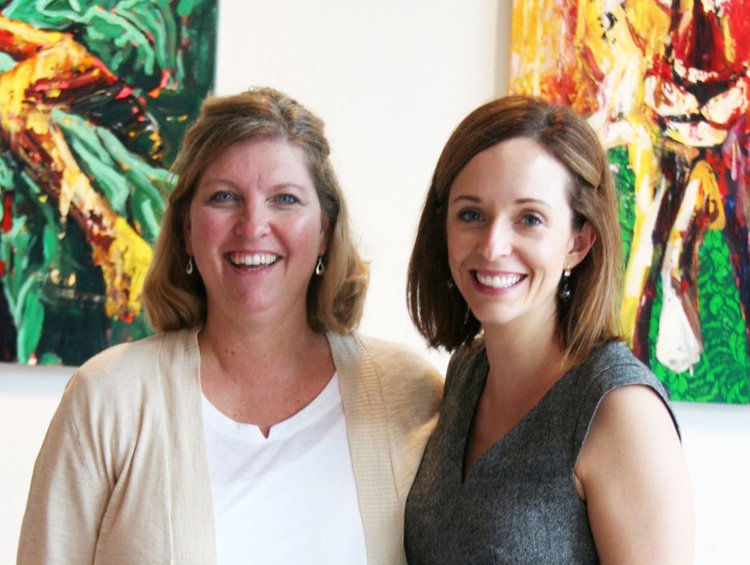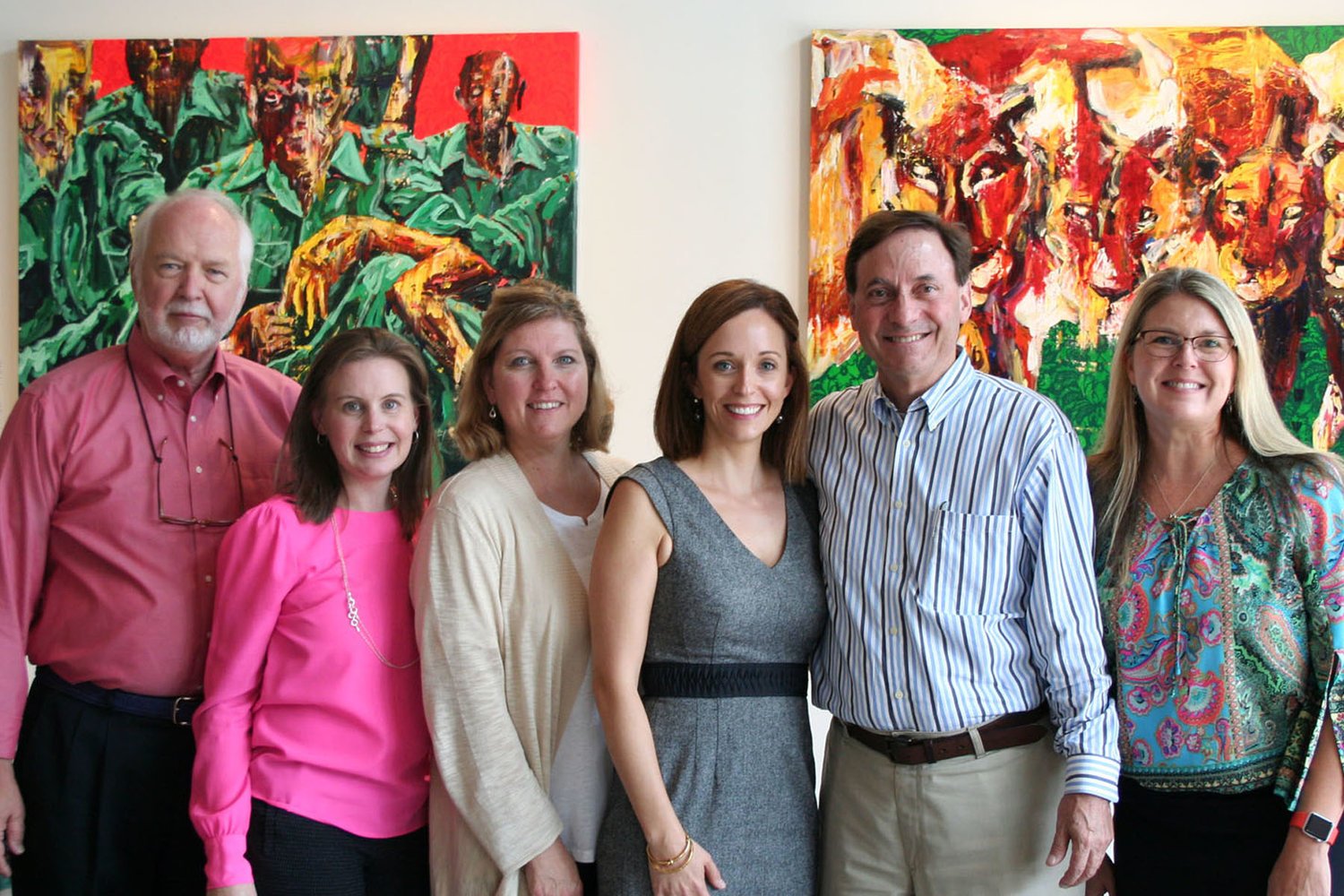Continuous Improvement (CI) - It's not about failure... it's about failing FORWARD
“WE NEED A PICTURE OF TODAY. IN IN A FEW YEARS, WE’RE GOING TO WANT TO LOOK BACK AND SAY THIS IS THE DAY IT HAPPENED.”
Local teachers excited to learn new practices to make the difference needed for students.
Those were the words of a local educator willing to spend extra hours in training in the hope that the missing link in her years of effort to impact students had just been found. She said that in July, during SAM’s first Continuous Improvement training sessions. It was said again in September as a second group of educators received their first training.
Why? They had just received permission to fail … forward.
Failure = Success
Cheryl Broadnax and Melissa McCoy are national leaders in embedding CI practice in educational settings.
The equation of failure=success was never taught in school, and certainly not in professional educator training. But now it will be. In fact, it will be the muscle behind developing a wave of successes. Cheryl Broadnax, senior director for district improvement with StriveTogether and consultant Melissa McCoy came to Spartanburg to train educators in the hidden power in the muscle of failure. Breaking loose from the emotional/judgmental stigma attached to failure releases that power, they explained. When teachers, principals, and superintendents sit in the same room and acknowledge that failure is acceptable, something changes. That’s exactly what happened around the SAM table during the Continuous Improvement training sessions held July 30-31. It happened again September 5-6, 2018.
All in - a group of educational leaders from SAM’s Four Schools Project train to make the difference for schools in high poverty communities.
“This unleashes the power of professional educators. We can track what’s working and what isn’t and share that in a way that makes a difference on a very practical level,” said Broadnax. She experienced this first hand as she worked to embed continuous improvement science across the Cincinnati school district where she served as assistant superintendent.
“This makes the invisible, visible,” explains. Mendy Mossbrook, Director of SAM’s developing Continuous Improvement Institute as she describes the process. “Instead of hiding development opportunities, we use the ‘current state’ to set goals and focus on improvement. It involves making small changes, continuously, with the expectation that these small changes add up to a significant difference. This is a very different approach than is familiar to many. The typical approach for change-making is to make a big goal or process shift that creates frustration and burnout when it is not obtained. This new approach builds toward success, not expecting it to be instantaneous, but sustained – the key to long-term impact,” Mossbrook explained.
The first cohort of CI trained educators included newly hired CI Coaches and teachers engaged in The Four Schools Project
SAM’s first summer training sessions involved newly hired CI (Continuous Improvement) coaches and administrators from Spartanburg Districts 6 and 7 and launched SAM’s Continuous Improvement training. Over two days they worked to understand the process steps that would guide their work within schools participating in “The Four Schools” initiative. The effort targets work within the four county schools with the highest rates of poverty, a factor tied directly to currently low success rates for students within those schools. The CI work takes the process-driven analytical model common to business and industry and merges it with the intricate human/relational element that plays out in the teaching/learning dynamic.
“Teaching is a matter of heart. It’s about relationships,” said Russell Booker, District 7 Superintendent, who participated in the training.
So rather than looking at a low grade as a fly to be batted away while moving forward through curriculum calendar, hoping the next grade will be better, that grade is now the reminder a teacher to drop back into the relationship built with the student and have the student figure out what happened. That’s right, the student.
If Joey didn’t demonstrate he’d mastered the skill, what does Joey think happened? What does the teacher think happened? Together, cause is identified and a change in strategy, an intervention, is planned.
Broadnax calls the process “facilitating in the wild” due to the personalized nature of the work. It’s not just re-teaching a concept, it’s getting deeply into how each child is internalizing his or her own learning.
Plan-Do-Study-Act: Repeat
After an intervention to improve a weakness has been planned (P) and tried (D), the results are studied(S). Then the action is either abandoned, adopted, or adjusted (A) and the process repeats. Even if a new strategy works, the process doesn’t end. A single strategy may not work in all applications, or for all students, so an ongoing pattern of monitoring long-term improvement begins, and most importantly, continues. It is the ultimate process of becoming “the best at getting better,” which can apply to everything from learning vocabulary words to managing stressors that distract a student from a lesson.
By embedding PDSA and an acceptance of failure into the system in place, success starts emerging. As PDSA cycles continue, success is achieved with growth, not just an end goal assessment. Ultimately, small successes, based on identifying failures, build larger successes.
By the afternoon of September 6, 29 educators were ready to head back to their schools and classrooms to start their first PDSA cycles. CI Coaches will be following those teachers and guiding their progression, helping to fine-tune the process. CI Coaches will share their work with follow-up coaching in November when Broadnax and McCoy plan to return.
After participating in the July training, 100% of the participants said they will plan their next lesson differently as a result of what they’d learned and all 29 said they’d recommend the training to a peer.
Embedding this process is its own PDSA. Ensuring responsive support is key to establishing a practice in schools that can continue. SAM has offered both – through the Continuous Improvement training launched in the summer of 2018, an ongoing effort to impact schools and educational success across Spartanburg County.
“This is celebrating and embracing improvement – not a single test score.”
– Mendy Mossbrook, Director of SAM’s Continuous Improvement Institute
SAM’s CI team - Dr. John Stockwell, SAM’s Executive Director; Beth Thompson, Director of Continuous Improvement; Trainer Cheryl Broadnax from StriveTogether; Melissa McCoy, Trainer and Independent Consultant; Dr. Glen Carson, SAM Director of Data Management; and Mendy Mossbrook, SAM’s CI Institute Director.






